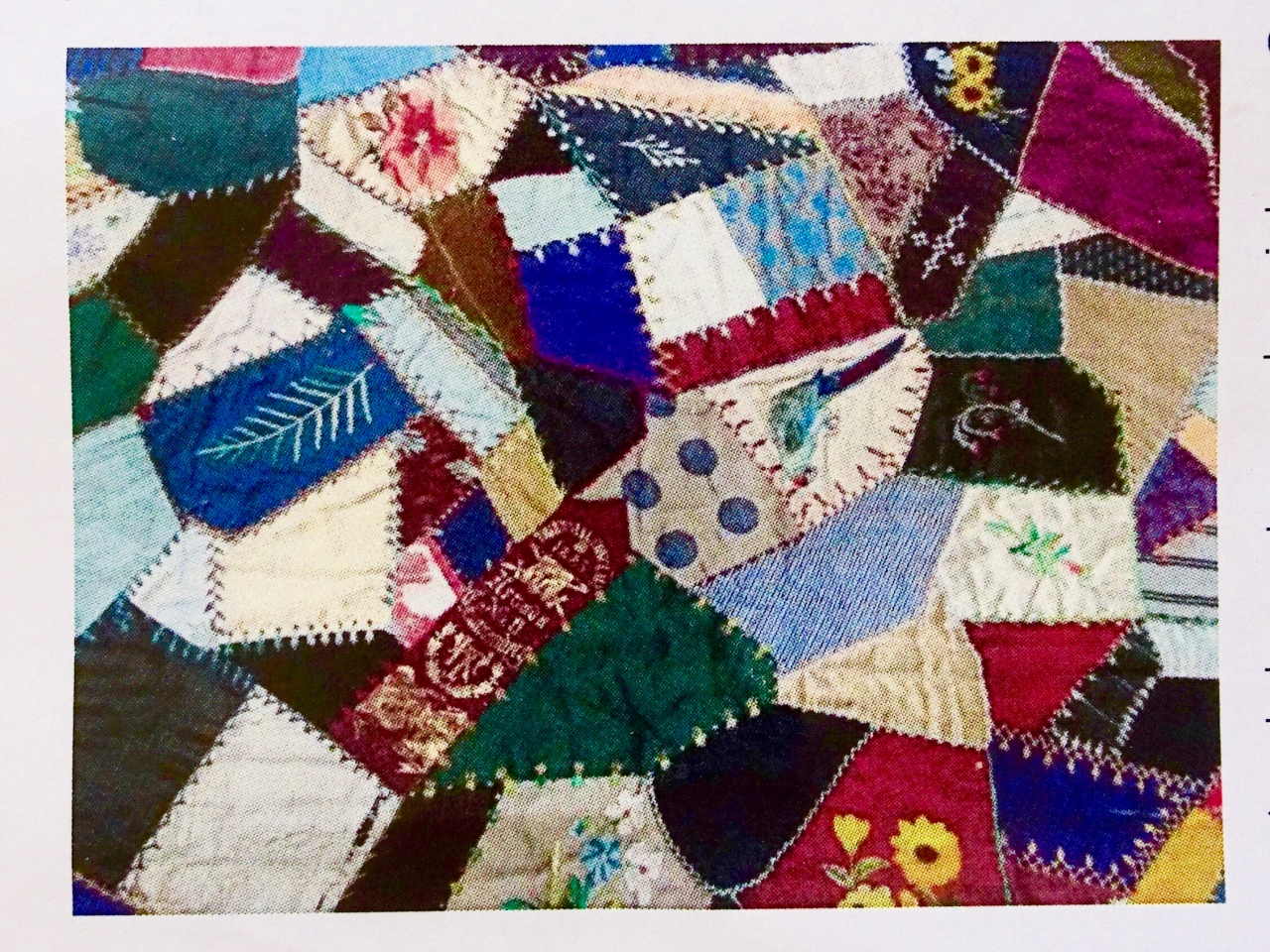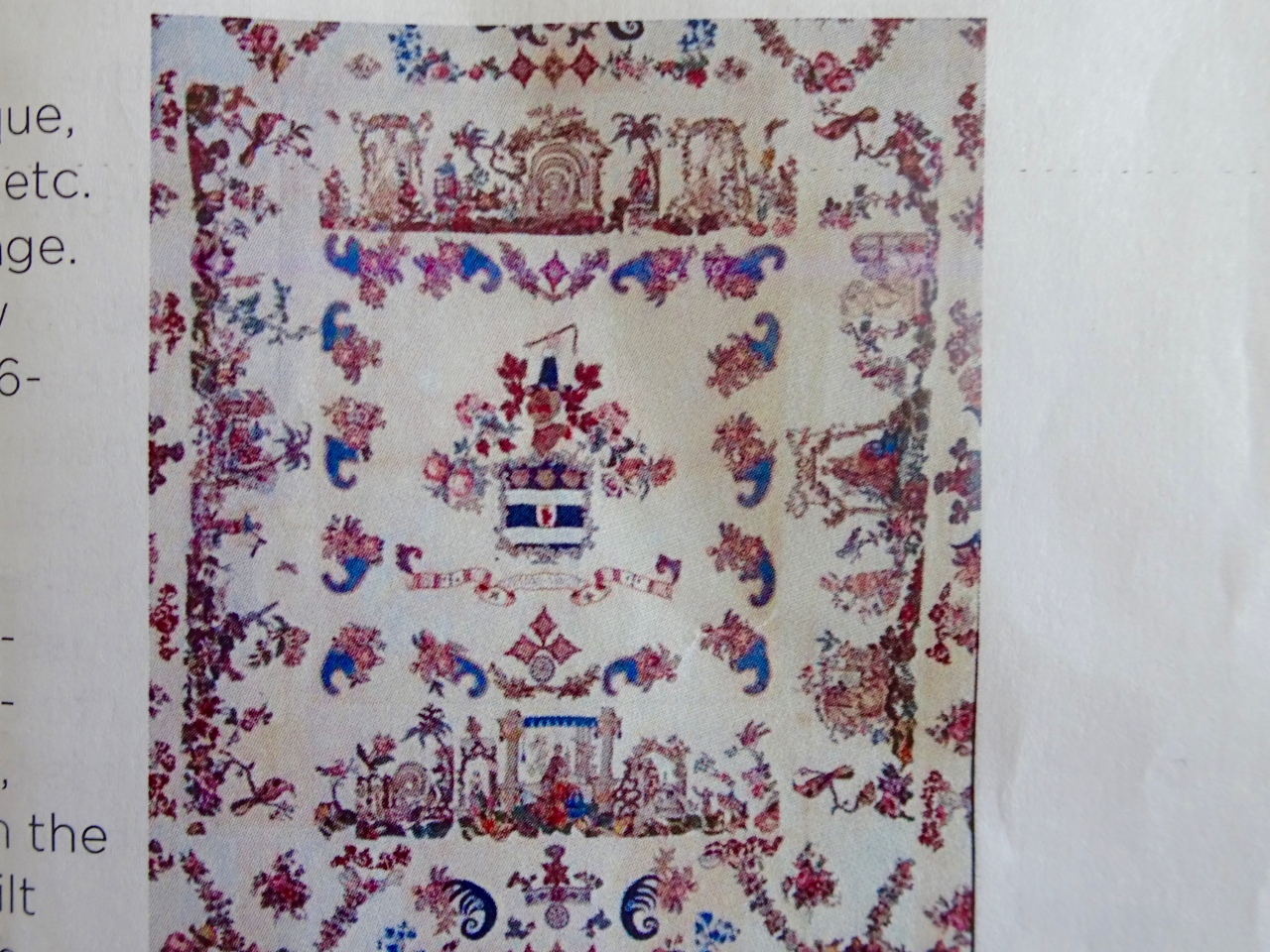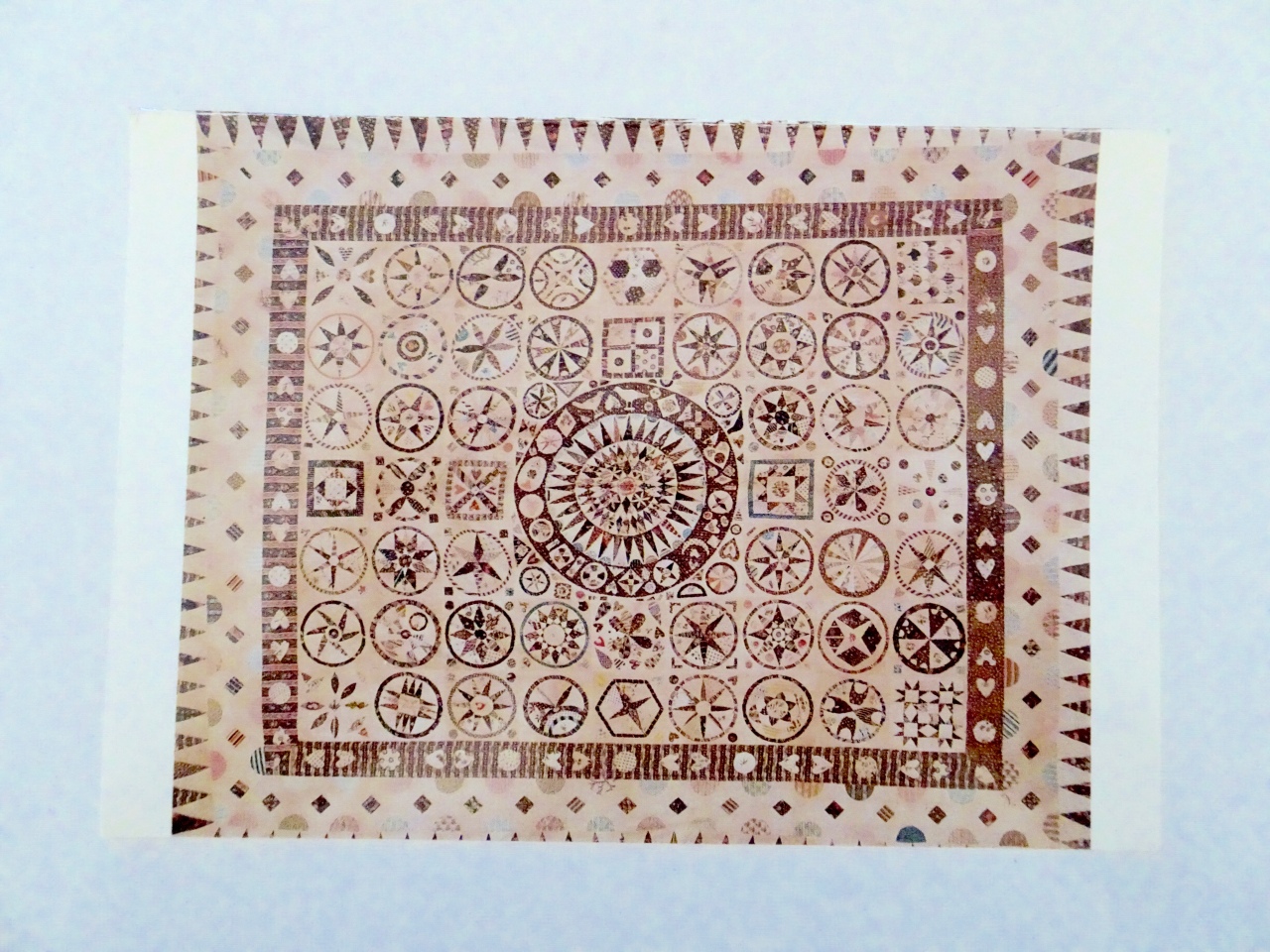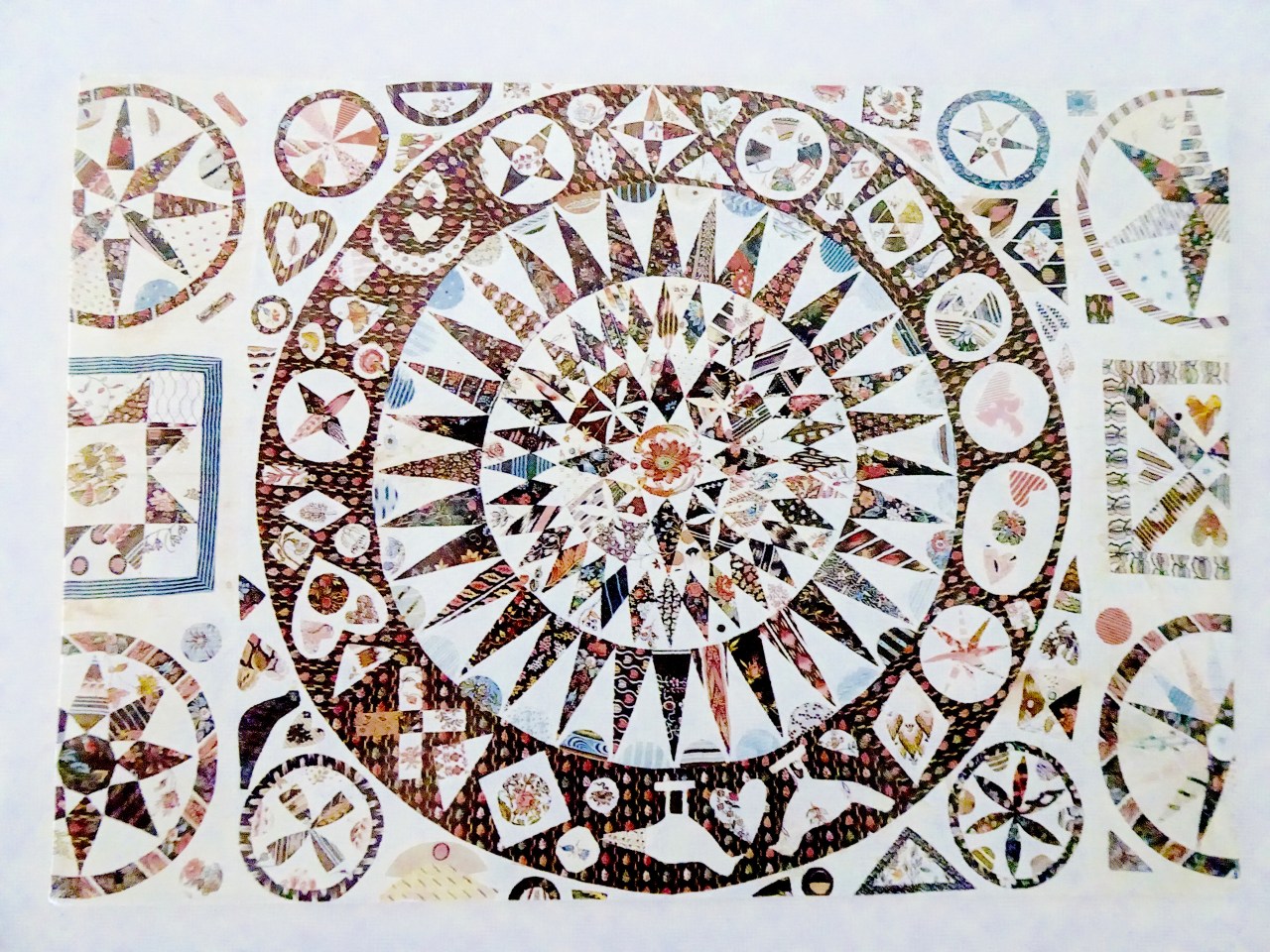Allow me a little moan.
A couple of Saturdays ago I managed to get into this ‘talk/small tour’ behind the scene at the Wilson Museum here in Cheltenham. The subject? vintage quilts from their archives.
How fab!
(side note I got in on a ‘senior’ tickets that somebody returned…. nobody queried it… slightly depressing)
Anyway, we were shown three incredible quilts. I mean seriously beautiful… BUT… we weren’t allowed to take any photos. THAT I don’t understand.
We were given an A4 piece of paper with a tiny partial photograph of each quilt… and that was it.
Now I could understand if the quilts were perhaps part of their regular collection and one were able to purchase materials on them or see them all the time… but no… they’re carefully rolled up or boxed away from the public.
Hidden! Secreted away! Buried!
(I should add that if you wanted photos of any detail of any quilt you needed to fill a form and the curator would have taken the photos… available to you for £1 each…)

We were shown a superb example of crazy quilting of probably 1887 (one corner says Mother 63 years 1887), incredible array of fabrics (including ribbons and bookmarks) and wonderful embroidery… It’s not my favourite style but I had to be impressed with the craftsmanship. The photo does not do it justice.
The next one was huge and in a style I had never seen. All the motives had been cut out from different fabric and appliquéd (quite roughly in places, suggesting perhaps a few different contributors. What the museum knows from its donor is that it was made in Golagh, Co Monaghan, Ireland by Elizabeth Isabella Wood-Wright, her daughters and her maids. It contains flowers, animals, the family motto and one of the patterns in the fabric used is the Thames Tunnel built by Brunel in 1843. (Very odd…)
The only photo I have is taken from the sheet and is pretty useless:

But it’s the last quilt that we were all there for.
It’s called the Jane Pizar cover from the lady who made it, again in Ireland between the beginning and middle and the 19th century.

I’ve only got a postcard of it and it was really sad not being able to take more pictures. A few years ago it sparked a mad craze amongst quilters all over the world. There are so many pictures on Pinterest of people who have reproduced it or have taken inspirations from it. (See here). People who have analysed the fabric used in this quilt speculate that perhaps Jane either worked to an old pattern for the design of the quilt, or she worked on it every many many years. (… not a modern phenomenon… procrastination…). It’s all a bit of a mystery. Some people call it a marriage quilt because of the motifs (hearts, birds in nests, moons…and if you really would like to make your own this lady has created a pattern for it… (for purchase as a kit here).
The design is inventive and original, full of surprises… and the fabric is just incredible… I wonder what it looked like when it was first made. The calico white… and the vibrancy of the colours must have made it look totally different.
What I don’t understand is why oh why is it tucked away in layers of tissues where nobody can see it? These days we know how to preserve mummies and dinosaur bones… surely…
I honestly thing this quilt should be treated like the uber famous ‘Dear Jane’ quilt that each year gets exhibited for a little while at the Bennington museum in Vermont. The museum could definitively make money out of it…
Sigh.
End of rant.


only if you can listen to my little moan!
I went in to get a ticket for that event, probably about a month before the event and was told it had sold out and I could go on the waiting list. 7th on the waiting list! I appreciate that the quilts are fragile and they have to handle them very carefully but maybe they should hold these events a little moreoften! or produce a decent set of photos for study. OK, moan over, thanks for sharing what you did see!
LikeLike
They exhibit many quilts at the American Museum in Bath, so why they cannot exhibit these is a mystery! As you say, they would be a great draw for the museum and they would surely be better shared – said as someone who works in a museum and knows some of the perils of displaying textiles! Glad you had a good time though.
LikeLike
The no photographs is a caution to prrevent degredation of the colors and fabrics by light. The flashes that cameras use have very strong light of a wavelength that can degrade color (just like sunlight does). The camera/flashes that they use to take photos to sell to you are specially filtered to remove the wavelengths of light that degrade the quilt (or so the curators and conservationists here in the US explain to me:).
I think the academic body politic (and I put museum curators into this category) largely see quilt makers as ‘little old ladies of no importance’. They have no idea about the commercial potential for sharing these works under liscense with the public. Sigh.
🙂 Linda
LikeLike